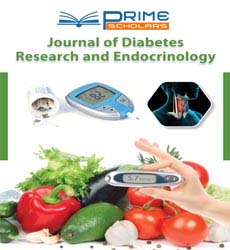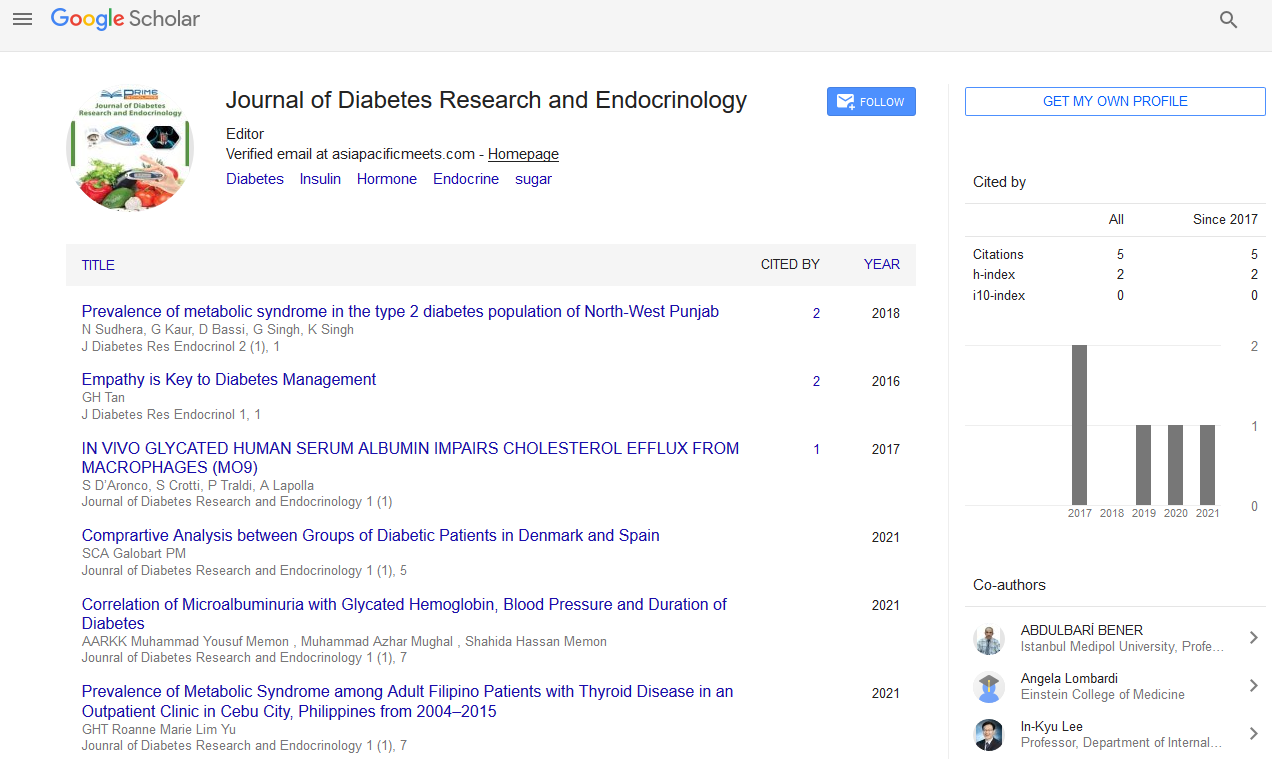Short Communication - (2023) Volume 7, Issue 2
Incredible Hyperglycaemia, Plasma Hyper Osmolality, and the Deficit of Fundamental Ketosis all Show a HHS State
Adrienne Dor*
Department of Anaesthesia, San Paolo University Hospital, Italy
*Correspondence:
Adrienne Dor,
Department of Anaesthesia, San Paolo University Hospital,
Italy,
Email:
Received: 31-May-2023, Manuscript No. IPJDRE-23-16851;
Editor assigned: 02-Jun-2023, Pre QC No. IPJDRE-23-16851;
Reviewed: 16-Jun-2023, QC No. IPJDRE-23-16851;
Revised: 21-Jun-2023, Manuscript No. IPJDRE-23-16851;
Published:
28-Jun-2023, DOI: 10.36648/ipjdre.7.2.11
Introduction
The clinical condition known as hyperosmolar hyperglycaemic
disorder is caused by a problem with diabetes mellitus. Type 2
diabetes addresses around 90% to 95% of diabetes cases. It is
most typically tracked down in patients with bulkiness. Hyperglycaemia
and ketoacidosis are linked in diabetic ketoacidosis,
whereas hyperosmolar hyperglycaemia states typically feature
severe hyperglycaemia and hyperosmolarity. Up to 30% of patients
with DKA may similarly have a couple of components of
HHS. Blood tests that reveal exceptionally concentrated and
extremely elevated glucose levels are used to evaluate the
hyperosmolar hyperglycaemic state. In people with type 2 diabetes,
the hyperosmolar hyperglycaemic state occurs when
blood glucose levels are extremely high, frequently exceeding
40 mmol/l [1,2].
Description
It can happen when you have an infection and don’t drink
enough water for several weeks. Insulin infusions are expected
by all HHS patients; regardless, brief treatment with insulin is
contraindicated in the basic organization of patients with HHS.
In these seriously dried out patients, the coursing volume is
kept up with by glucose’s osmotic strain inside the vascular
space. Having neurological symptoms, on the other hand, is a
significant distinction. An individual with HHS might encounter
fantasies, disarray, tiredness, vision misfortune, and, surprisingly,
a trance like state. Glucose rises superfluously because of
the two circumstances. DKA, then again, is connected to high
blood ketones levels, while HHS isn’t. HHS treatment requires
four pronged philosophy: Active rehydration intravenous injection,
Electrolyte the leaders, Intravenous insulin, as well as the
board of encouraging and coexisting issues. Type 2 diabetes is
one of the risk factors that can lead to HHS. Drying out solutions
like diuretics, beta-blockers, and certain antipsychotics. A
family history of diabetes and severe obesity. Despite the fact
that liquids alone can help a many individuals in hyperosmolar
hyperglycaemic state, intravenous insulin in sums like those
utilized in diabetic ketoacidosis can assist with revising hyperglycaemia.
When insulin is used without a healthy liquid substitute,
the risk of shock increases. Due to extracellular potassium
shift caused by insulin deficiency, hyper tonicity, and academia,
serum potassium levels may be strangely high. Due to severe
potassium deficiency, individuals with HHS may experience
low potassium levels, particularly in severe cases. The problem
known as hyperosmolar hyperglycaemic state is most normal in
type 2 diabetics and is connected to a high death pace of up to
half. Hypernatremia worsens the prognosis when HHS is present.
At serum sodium level more noteworthy than 160 mosm/
kg, encephalopathy is clear. Extreme hyperglycaemia, plasma
hyper osmolality, and the absence of critical ketosis all indicate
a hyperosmolar hyperglycaemic state. Saline arrangement and
insulin are controlled intravenously. Bothers integrate obviousness,
seizures, and passing. At the point when serum osmolality
is under 320 mosm/kg, HHS is gone, and mental sharpness
bit by bit returns. Controlling blood glucose might accept two
times as lengthy with the last option [3,4].
Conclusion
In contrast with hyperglycaemia, ketonemia ordinarily clears
up more leisurely. In HHS, the mild acidosis is frequently multifactorial
and, to some extent, is caused by the accumulation of
negligible ketoacidosis without effective insulin action. Some
patients with severe parchedness may have high anion holes,
a sign of the increased commitment of lactic acid caused by
tissue hypo perfusion.
Acknowledgement
None.
Conflict Of Interest
The authors declare that they have no conflict of interest.
References
- Yagyu H, Shimano H (2022) Treatment of Diabetes Mellitus has borne much fruit in the prevention of cardiovascular disease. J Diabetes Investig. 13(9):1472-1488.
[Crossref] [Google Scholar] [PubMed]
- L'hadj I, Azzi R, Lahfa F, Koceir EA (2019) The nutraceutical potential of Lepidium sativum L. seed flavonoid-rich extract in managing metabolic syndrome components. J Food Biochem. 43(3):e12725.
[Crossref] [Google Scholar] [PubMed]
- Gopalan G, Prabha B, Joe A, Reshmitha TR (2019) Screening of Musa balbisiana Colla. seeds for antidiabetic properties and isolation of apiforol, a potential lead, with antidiabetic activity. J Sci Food Agric. 99(5):2521-2529.
[Crossref] [Google Scholar] [PubMed]
- Ahmed S, Islam N, Shahinozzaman M, Fakayode SO (2021) Virtual screening, molecular dynamics, density functional theory and quantitative structure activity relationship studies to design peroxisome proliferator-activated receptor-γ agonists as anti-diabetic drugs. J Biomol Struct Dyn. 39(2):728-742.
[Crossref] [Google Scholar] [PubMed]
Citation: Dor A (2023) Incredible Hyperglycaemia, Plasma Hyper Osmolality, and the Deficit of Fundamental Ketosis all Show a
HHS State. J Diab Res Endocrinol. 7:11.
Copyright: ©2023 Dor A. This is an open-access article distributed under the terms of the Creative Commons Attribution License, which permits unrestricted use, distribution, and reproduction in any medium, provided the original author and source are credited.

